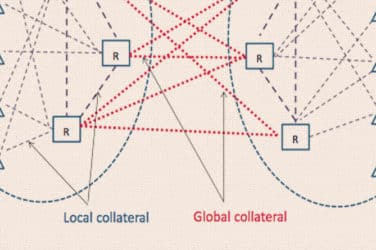
Markit, the financial information provider, has compiled schedules to allow exchange-traded funds to be used as securities lending collateral in Europe which could further accelerate the growth in assets under management.
Mark Schaedel, managing director of indices at Markit, told Markets Media that one of the barriers to the growth of the European ETF market has been a concern over perceived lack of liquidity which has led to a lack of lending.
“In Europe, less than 5% of ETFs available for lending are currently on loan, compared to four times this amount in the US over the last five years,” Schaedel added. “With a little bit more transparency and analysis, ETFs could be tapped as an effective resource during a collateral crunch and beneficial owners could get lending income.”
Markit has put together collateral lists by applying quantitative criteria to assess ETFs on a fund-by-fund basis and is working with tri-party agents to facilitate ETF collateral transactions.
Simon Colvin, research analyst at Markit, posted in a blog that more than 55% of attendees of Markit’s London Securities Finance forum did not accept exchange-traded products as collateral despite the growth in assets.
Anthony Kruger, responsible for pricing data at Markit, said the criteria for the equity ETFs on the collateral schedule include that they are physical, have assets under management of at least $100m and an exposure to the main benchmark indices in the UK, US, Canada, France, Germany, Switzerland and the Eurozone.
“They are all single leverage, cannot be inverse ETFs and have to track indices within an error of less than 1%,” added Kruger. “The fixed income ETFs are extremely high quality and consist of sovereign issues from Germany, France, the UK and US, and are at the short to mid-end of the yield term structure.”
The equity ETFs on the collateral schedules represent approximately $480bn in assets under management from 61 funds and 17 issuers. The fixed income ETFs represent $35bn in assets under management from 22 funds and 7 issuers.
Andrew Jamieson, global head of broker dealer relationships for iShares, BlackRock’s ETF business, told Markets Media: “In Europe the use of ETFs as collateral has been limited to date due to the perceived lack of transparency and how they should be classified so the Markit filters add value to this process. ETFs have been growing assets under management at a fast pace and in conjunction with an increasing need for collateral bringing them both together makes sense.”
Jamieson said that BlackRock has adopted the Markit collateral filters as a lender and it equally fits the aspirations of iShares as an issuer. “We have been working on the collateral project as a high priority for 12 to 18 months and we think this is a solution that benefits the whole industry and helps bring ETFs into mainstream use,” he said.





